Rounds 1-2
Annotated by GM Alexandr Kalinin
Recap of Rounds 1 and 2
The opening rounds of the Moscow Open, RSSU Cup abounded in surprises—many of the top-seeded players have already suffered losses. In the present recap, however, we will focus not on the sensation of the duels, but rather on their instructive value.
David Bronste in commented on one of the games featured in his excellent book “200 Open Games” had a special name for a white a1 rook which was too late to enter the battle and watched the collapse of his entire army from its initial position. In the game of our analysis it is the black h8 rook playing the role of “sleeping beauty.”
Francisco VALLEJO (Spain) – Dmitry ROZHKO (Russia)
01/31/2015
Cup of Russia stage 2015
1.d4 d5 2.c4 c6 3.Nf3 Nf6 4.Nc3 a6 5.e3 b5 6.c5
The advance c4-c5 clearly determines the plans of each side. White has siezed space on the queen-side and will attack there by means of b2-b4 and a2-a4, perhaps in combination with a piece sacrifice on b5. Black, in turn, will strive to control the center in connection with the advance e7-e5.
6…Bg4 7.h3 Bxf3 8.gxf3!?
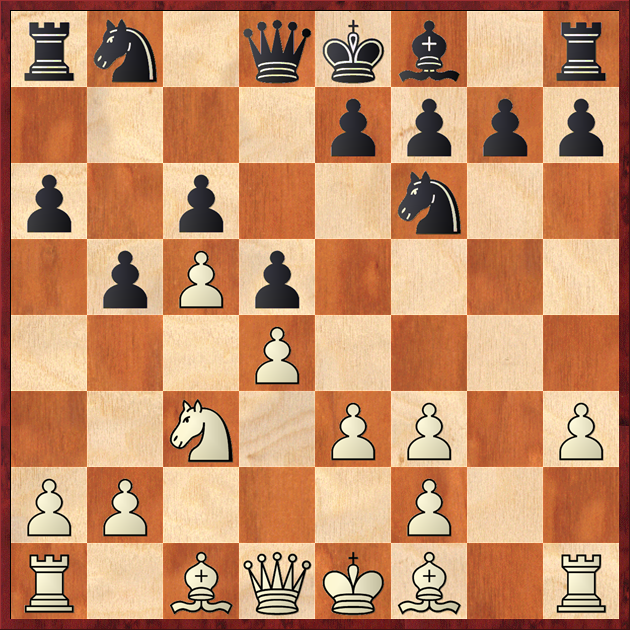
Activating the g2 pawn for a later f3-f4, joining the fight for control of the square e5. Also at white's disposal is the g-file. The alternative was 8.Qxf3 Nbd7 9.g4 e5 10.g5 e4 11.Qg2 Ng8 12.h4 with complicated play.
8...e5
Black strives to immediately free his position, but an opening of the game leads to the activation of the opposing bishop.
More solid would have been 8...Nbd7 9.f4 g6 10.Bd3 e6 etc.
9.dxe5 Nfd7 10.f4 Nxc5 11.b3 Nbd7 12.Bb2 a5 13.Bg2
The white bishops have taken the board in cross-fire. Aside from this, there hangs in the air the destructive knight sacrifice on d5.
13…a4
Postponing the evacuation of the king from the center, black decides to neutralize at least one of the bishops.
14.Rc1 axb3 15.axb3 Ne6 16.0–0 Ba3
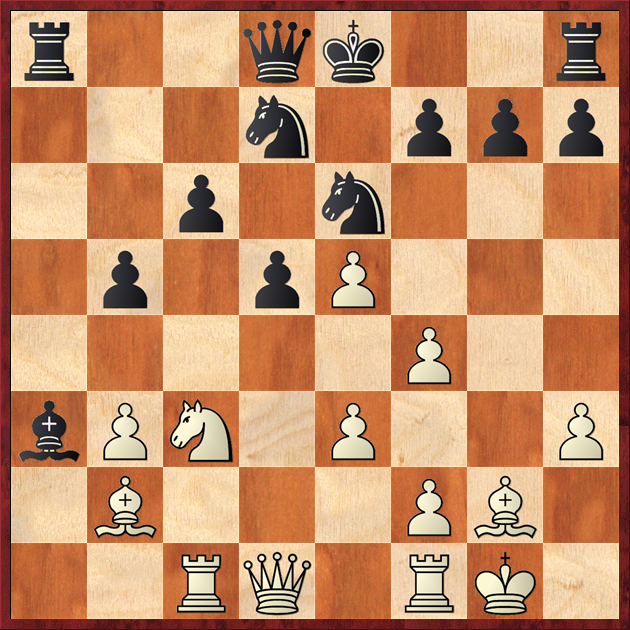
The b2 bishop achieves the exchange, but the the price of this proves too expensive. The incipient battle in the center is fatal for black owing to his lag in development.
17.Bxa3 Rxa3 18.f5 Nc7 19.e4 d4 20.Qxd4 c5 21.Qd1 Nxe5
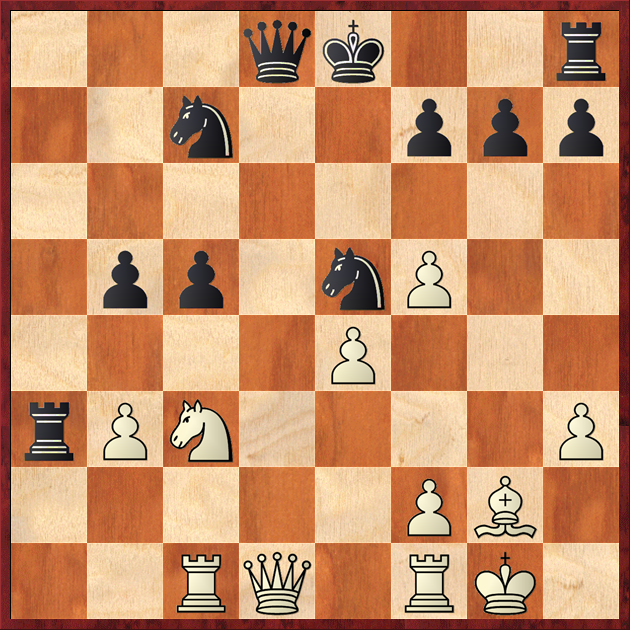
22.Nxb5! Nxb5 23.Qxd8+ Kxd8 24.Rxc5 Rxb3 25.Rxe5 Nc3 26.Ra1 Kc7 27.Re7+ Kd6 28.Rxf7
Black's position is lost, and the h8 rook has not budged an inch.
A few moves later black admitted his defeat.
“The Glass Fortress”
It is a pleasure to mention that this year the top boards of the amateur tournament are broadcast, which we will take advantage of right now.
.Gleb APRYSHKO(Russia) – Grant ANTONYAN(Armenia)
01/31/2015
Amateur's RSSU Cup
1.e4 e5 2.Nf3 Nc6 3.Nc3 g6 4.d4 exd4 5.Nd5 Bg7 6.Bg5 Nce7 7.Nxd4 c6 8.Nxe7 Nxe7 9.Qd2
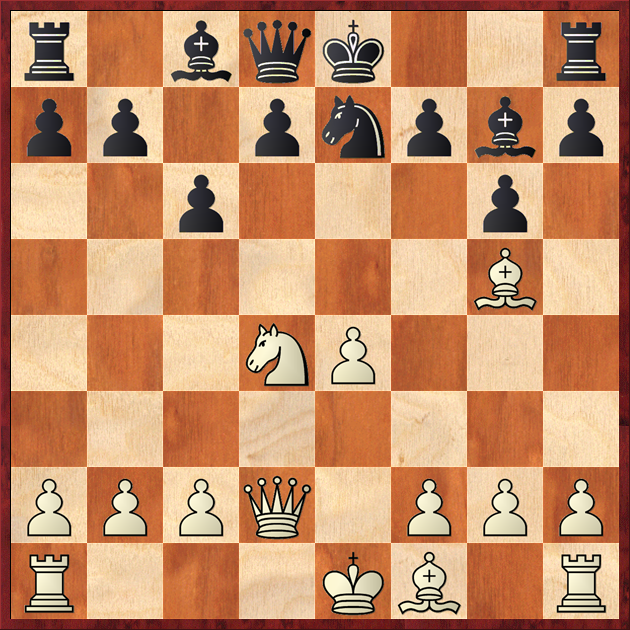
9...0–0
It is surprising that such a natural move could prove to be inaccurate. Theory recommends 9...h6, following any retreat of the black g5 bishop by making the freeing advance d7-d5.
10.0–0–0 Re8
Here better would have been 10...d5. The text move allows white to sieze the key position in the center.
11.Bc4 Qc7 12.Rhe1 b5 13.Bb3 Bb7
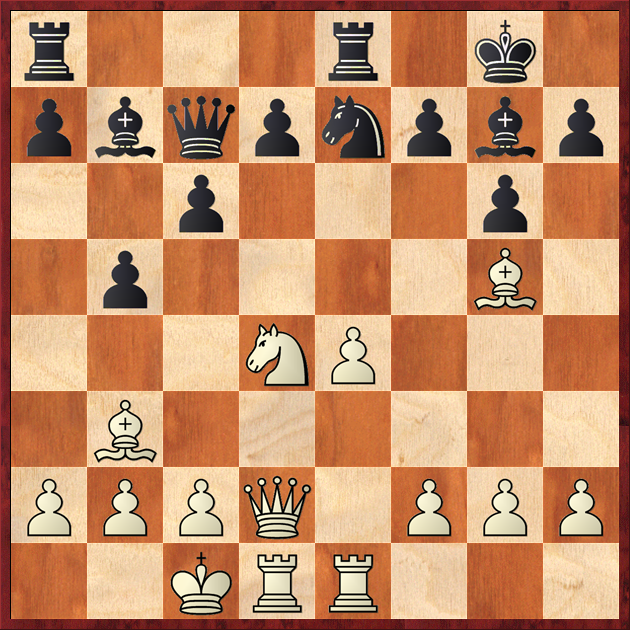
Black's fortress proves to be made of glass—the e4 pawn, ambitiously advancing to e6, smashes it to smithereens.
14.e5! a6
The pawn capture е5 14...Bxe5, followed by either 15.f4 or 15.Nf3, leads to an exchange of the e5 bishop and a decisive weakening of the black king.
15.e6! dxe6 16.Nxe6! fxe6 17.Bxe6+ Kf8
Or 17...Kh8 18.Bd7.
18.Bf4 Qb6 19.Bd6 1–0
Buried in the same grave ... for the 35th time!
Lei, TINGJIE (China) – Polina MASLOVA (Russia)
01/31/2015
Women's Cup of Russia stage 2015
1.c4 e5 2.Nc3 Nf6 3.g3 d5 4.cxd5 Nxd5 5.Bg2 Nb6 6.Nf3 Nc6 7.0–0 Be7 8.a3 0–0 9.d3 Be6 10.b4 a5 11.b5 Nd4 12.Rb1 f6 13.Nd2 Nd5?
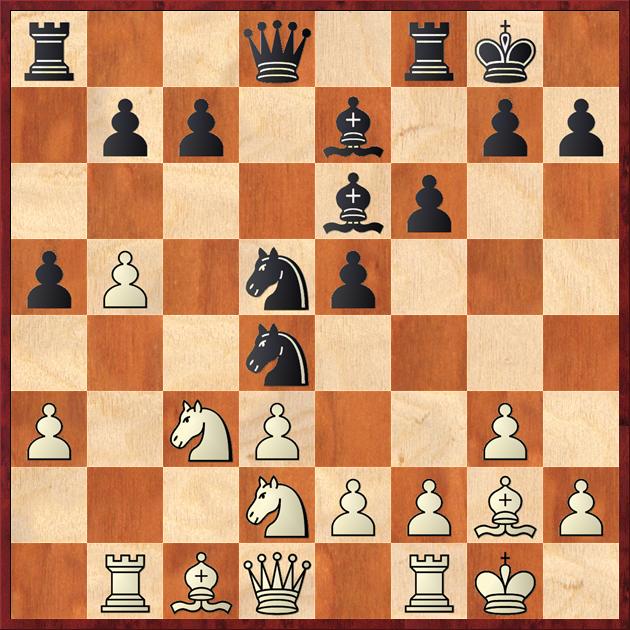
Black falls for a well-known opening trap. By Chess Base's count this natural knight move to d5 had been played 34 times before. And this is not counting analogous positions of reversed colors!
14.Bxd5!
Similar exchanges of the fianchetto bishop for a knight often escape the eye.
14…Bxd5 15.e3 Ne6 16.e4 1–0. The black bishop is trapped in the center.
Arabian Nights
“However can you, being so enormous, possibly fit into such a small lamp?” Aladdin asked the Genie.
“Watch and behold!” answered the Genie, and … he disappeared into the lamp.
The theme of this Arabian Nights tale has spawned legends in countries the world round. And it made its way into the following game of Ian Nepomniachtchi.
Ian NEPOMNIACHTCHI – Ulvi SADYKHOV
02/01/2015
Men's Cup of Russia stage 2015
1.e4 d6 2.d4 Nf6 3.Nc3 e5 4.Nf3 Nbd7 5.Bc4 Be7 6.a4 0–0 7.0–0 a5 8.h3 c6 9.Ba2 h6 10.Be3 Re8 11.Re1 exd4 12.Nxd4 Bf8
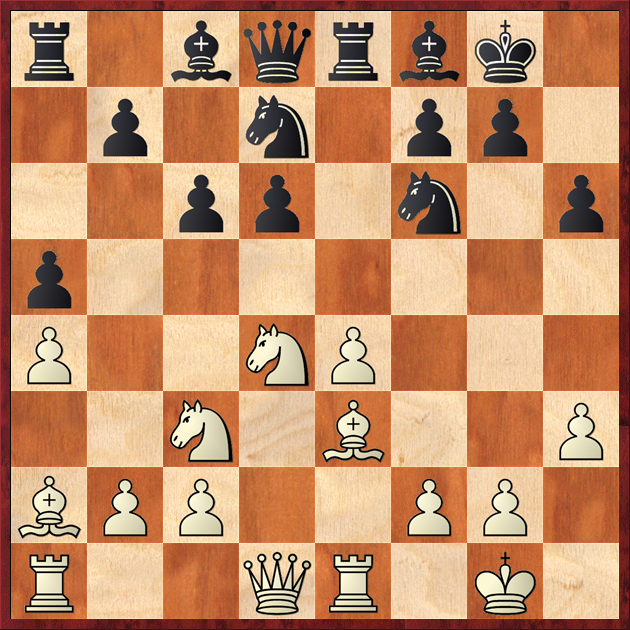
Now how could such a powerful piece as the white queen possibly disappear to the bottom of the lamp (square h1) through such a narrow neck (square h2)? Watch and behold!
13.Qf3 Ne5
After 13...Nc5 14.Bf4 the white pieces are located in excellent attacking positions. Therefore, black decides to swat at the white queen as it would an annoying fly.
14.Qg3 Nh5 15.Qh2
The queen has comfortably situated itself on h2, and after Rad1 and f2-f4 white is prepared to join in the attack. Black takes drastic action.
15…d5 16.exd5 Bd6 17.Qh1!
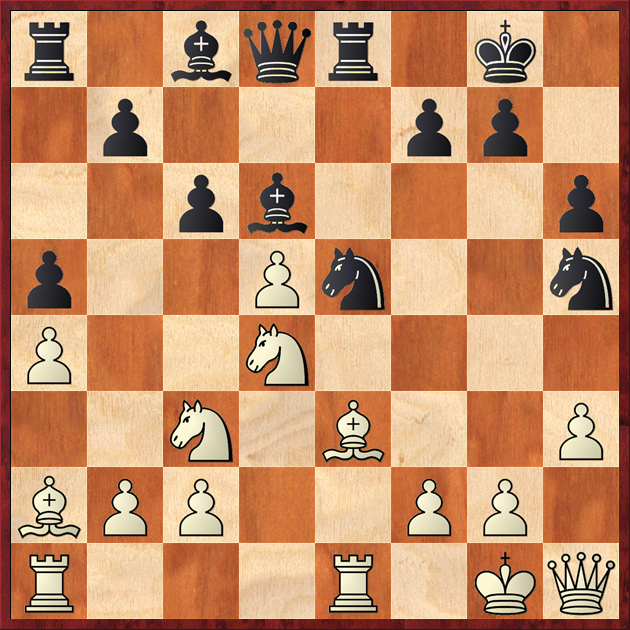
The impossible has happened! Black chased the queen to h1. However, as we shall see, should need be the queen may quickly enter the game after g2-g4, and black's center hasn't a brick to stand on! There followed:
17...Ng6 18.dxc6 bxc6 19.Nxc6 Qd7 20.Rad1 Bb7 21.Nb5 Qxc6 22.Nxd6 1–0
The Prince and the Popper
The next battle couldn't help but remind me of the old game Prins – Kotov (Interzonals, Stockholm, 1952). The Dutch master Prins, not calculating through a string of sacrifices made a desperate attack on the position of the tournament leader. When nothing came of it the tournament participants joked that Prins began the attack as a prince, and came out of it a popper. However, unlike the Dutch master, Aleksandr Demin found an interesting way to draw.
Alexandr DEMIN – Vladimir FEDOSEEV
02/01/2015
Men's Cup of Russia stage 2015
1.d4 g6 2.Nf3 Bg7 3.c4 Nf6 4.Nc3 d5 5.cxd5 Nxd5 6.e4 Nxc3 7.bxc3 c5 8.Be3 Qa5 9.Qd2 0–0 10.Rc1 e6 11.Bd3 b6 12.Bh6 Nc6 13.Bxg7 Kxg7
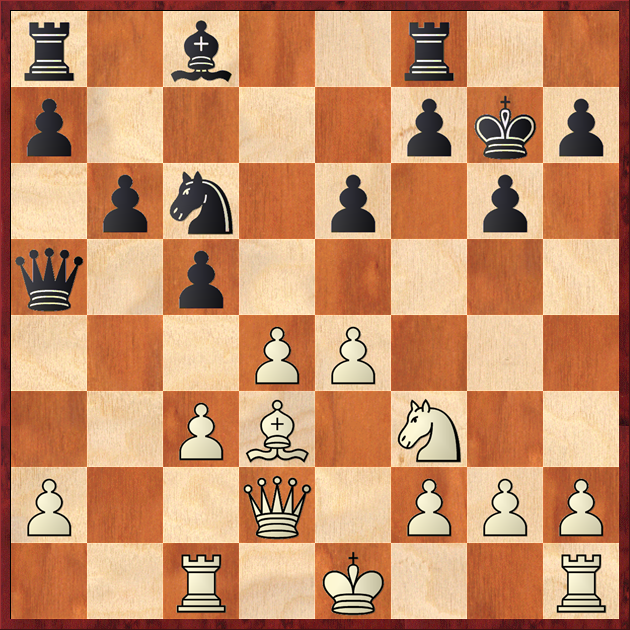
14.h4
Fully possible was the natural 14. 0-0, since in answer to 14...cxd4 was the hidden resource 15.Qb2! White, however, decides to leave the king in the center and bring the h1 rook in to action from its initial position.
14...h5 15.e5
Here also could have been played 15.0–0 cxd4 16.Qb2.
15...Ba6 16.Be4 Rac8

The bridges are burned, and white lunges into a desperate attack.
17.Qg5 Qxa2
Warning—mate threat on e2!
An alternative was 17...cxd4. The computer considers that after 18.Qf6+ Kh6 19.Rh3! white maintains dynamic equality. Anyhow, the reader may dig through computer analysis on his own.
18.Qf6+ Kg8 19.Rc2 Qa1+ 20.Kd2 Qxh1 21.Bxg6 Na5!
In case of 21...cxd4 22.c4 and white puts the brake on his opponent's threats.
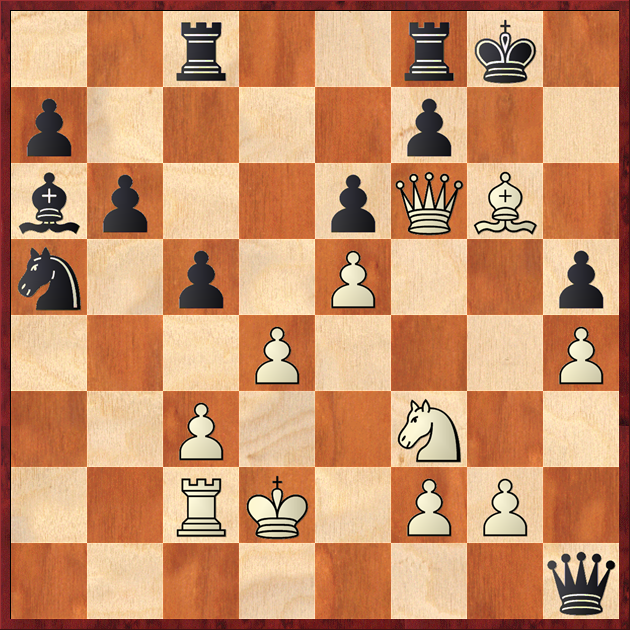
Black cooly bit the h1 rook, and now, just as cooly begins counter-threats with 22…Nc4+. Although white the white pieces are literally breathing upon the black king, they have trouble finding even a perpetual check!
22.Ra2?
The decisive mistake. It needs to be said that white's salvation was not even found in the hall where games were commentated for spectators. The computer, however, saves things with the ever so quiet 22.Qg5 Nc4+ 23.Ke2 Nxe5+ 24.Bd3+!!, and the conflict ends in a draw, for example:24…Ng6 25.Bxa6 Qb1 26.Bd3 Rc7 27.Ne5 Qb3 28.c4 cxd4 29.Nxg6 fxg6 30.Qxg6+ Rg7 31.Qxe6+ Rff7 32.Qc8+ with perpetual check.
22...Nb3+ 23.Kc2 Bc4 24.Qg5 Qc1+ The queens are exchanges and white is left defenseless. 0–1
A Classical Rediscovery
An example of the creativity of the Indonesian chess player, leading the round-robin tournament student-grandmasters.
Polina RODIONOVA (Russia) – Irinae Kharisma SUKANDAR (Indonesia)
02/01/2015
Women's Student-grandmaster A.Pochinok Memorial
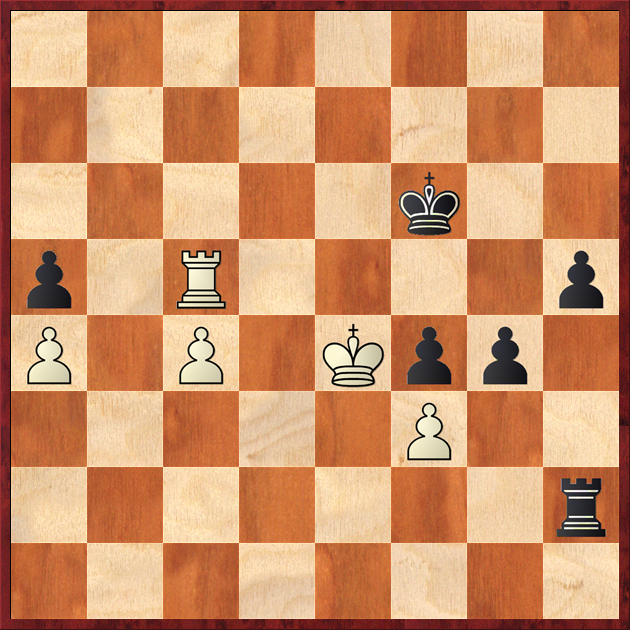
It seems the passed pawns are under control. However …
42...g3! 43.Kxf4 g2 44.Rf5+ Ke6 45.Rg5
The fate of the game would not have changed after 45.Re5+ Kd6 46.Rd5+ Kc6 47.Rg5 (47.Rd1 Rh1) 47...Rh4+ etc.
45...Rh4+ 46.Ke3
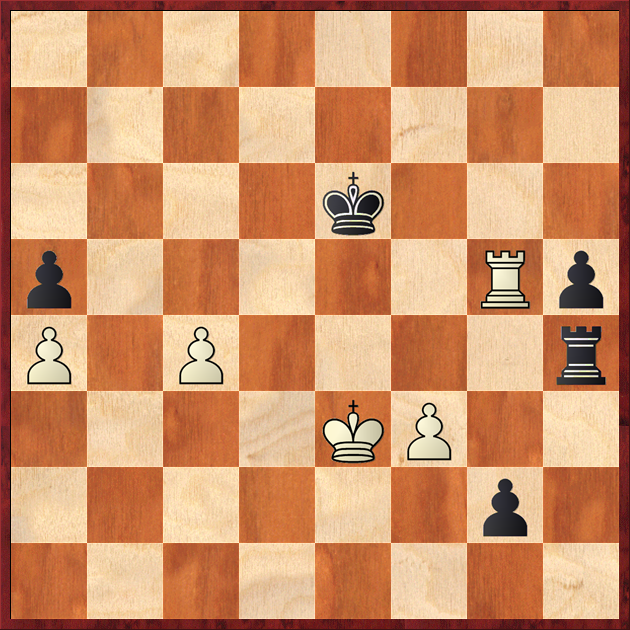
46...Rg4! A classic combination of the motive “blocking,” frequently found in both rook endgame problems and in practice. 0–1















